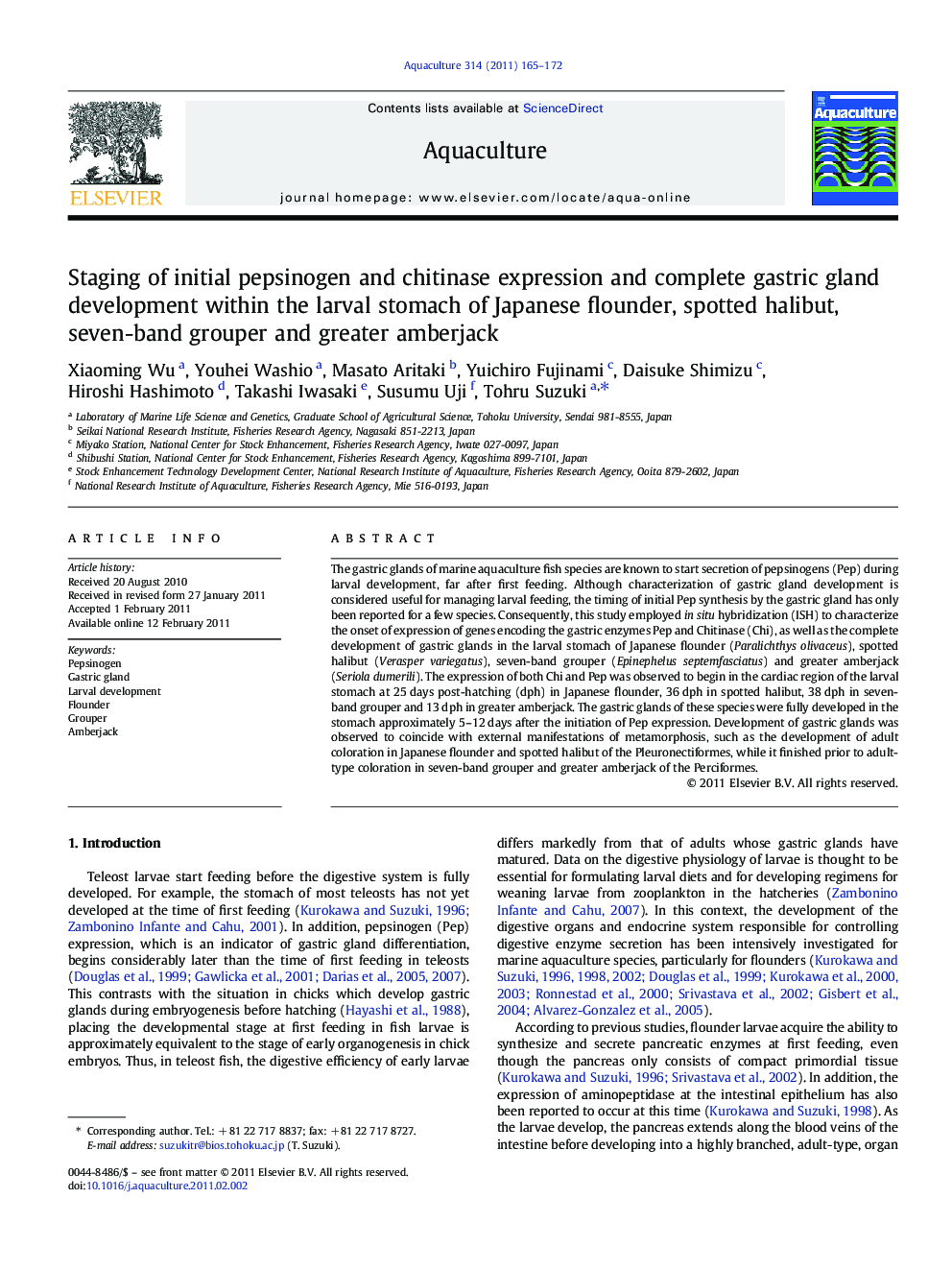| Article ID | Journal | Published Year | Pages | File Type |
|---|---|---|---|---|
| 2423117 | Aquaculture | 2011 | 8 Pages |
The gastric glands of marine aquaculture fish species are known to start secretion of pepsinogens (Pep) during larval development, far after first feeding. Although characterization of gastric gland development is considered useful for managing larval feeding, the timing of initial Pep synthesis by the gastric gland has only been reported for a few species. Consequently, this study employed in situ hybridization (ISH) to characterize the onset of expression of genes encoding the gastric enzymes Pep and Chitinase (Chi), as well as the complete development of gastric glands in the larval stomach of Japanese flounder (Paralichthys olivaceus), spotted halibut (Verasper variegatus), seven-band grouper (Epinephelus septemfasciatus) and greater amberjack (Seriola dumerili). The expression of both Chi and Pep was observed to begin in the cardiac region of the larval stomach at 25 days post-hatching (dph) in Japanese flounder, 36 dph in spotted halibut, 38 dph in seven-band grouper and 13 dph in greater amberjack. The gastric glands of these species were fully developed in the stomach approximately 5–12 days after the initiation of Pep expression. Development of gastric glands was observed to coincide with external manifestations of metamorphosis, such as the development of adult coloration in Japanese flounder and spotted halibut of the Pleuronectiformes, while it finished prior to adult-type coloration in seven-band grouper and greater amberjack of the Perciformes.
